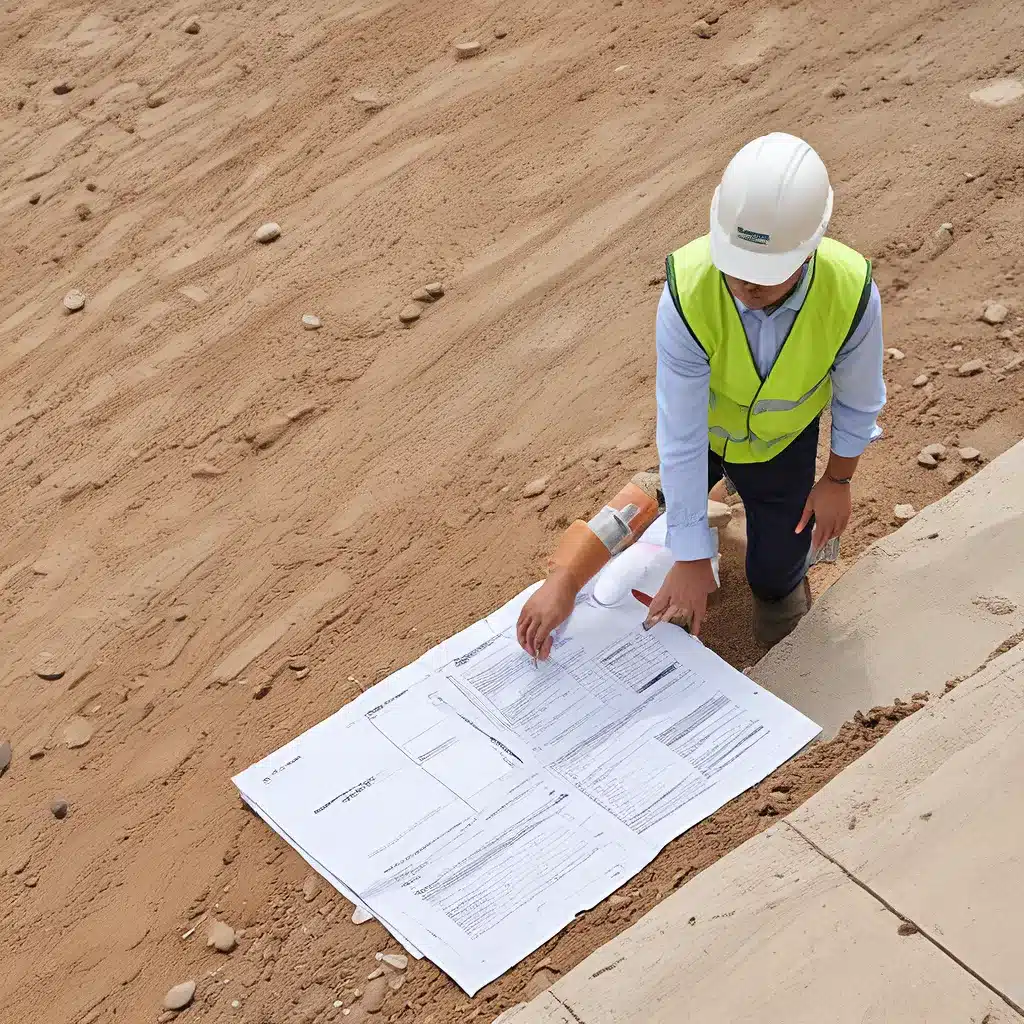
As a seasoned general contractor, I’ve witnessed firsthand the remarkable strides the construction industry has made in embracing sustainability and eco-friendly practices. Gone are the days when “going green” was simply a trendy buzzword – today, it’s a strategic imperative that’s reshaping the way we build.
In this comprehensive article, we’ll dive deep into the latest green construction trends, exploring the innovative technologies, materials, and strategies that are paving the way for a more sustainable future. So, buckle up, because this is going to be one informative (and hopefully, entertaining) ride!
Harnessing the Power of Renewable Energy
One of the most exciting developments in the green construction realm is the growing adoption of renewable energy solutions. Solar panels, once considered a niche technology, are now becoming a ubiquitous feature on new commercial and residential buildings. And it’s not just solar – wind turbines, geothermal systems, and even hydroelectric power are being integrated into construction projects, reducing the reliance on fossil fuels and cutting down on energy costs.
As a general contractor, I’ve personally overseen the installation of several solar arrays on large-scale projects, and the transformation is nothing short of remarkable. Imagine a construction site that’s completely self-sufficient, powered by the very sun that shines down upon it. It’s a sight to behold, and one that’s becoming increasingly commonplace.
But the benefits of renewable energy go beyond just environmental impact. Studies have shown that buildings equipped with renewable energy systems can attract higher property values and command premium rents, making them a savvy investment for both developers and homeowners alike.
The Rise of Green Building Materials
Another trend that’s gaining traction in the construction industry is the use of eco-friendly building materials. Gone are the days of relying solely on traditional materials like concrete and steel – today, we’re seeing a surge in the use of sustainable alternatives like wood, bamboo, insulated concrete forms, and non-VOC paints.
These materials not only have a lower environmental impact, but they also offer a range of practical benefits. For example, bamboo is an incredibly strong and durable material that can be used for everything from flooring to furniture, while insulated concrete forms provide superior thermal insulation, reducing energy consumption and heating/cooling costs.
As a general contractor, I’ve been particularly impressed by the advancements in wood-based construction. Gone are the days of the heavy, bulky timber frames of the past – today, we’re seeing the rise of cross-laminated timber (CLT), a revolutionary material that’s both strong and lightweight. CLT buildings not only have a smaller carbon footprint than their concrete and steel counterparts, but they also offer improved energy efficiency and acoustic performance.
Embracing the Circular Economy
Another exciting trend in the world of green construction is the growing embrace of the circular economy. Instead of the traditional linear “take-make-waste” model, the circular economy focuses on reducing waste, reusing materials, and recycling resources.
This shift is having a profound impact on the construction industry, with an increasing number of projects incorporating recycled and reclaimed materials. I’ve seen everything from repurposed shipping containers being used as modular housing units to old bricks and concrete being crushed and reused as aggregate in new construction projects.
But the circular economy isn’t just about recycling – it’s also about rethinking the way we design and construct buildings. Modular construction, for example, allows for the easy disassembly and reuse of building components, reducing waste and improving the overall sustainability of a project.
And the benefits of the circular economy go beyond just environmental impact. Studies have shown that circular construction practices can also lead to significant cost savings, as well as improved project timelines and reduced construction waste.
Embracing Green Certifications
As the demand for sustainable construction continues to grow, so too has the importance of green building certifications. LEED (Leadership in Energy and Environmental Design) is perhaps the most well-known of these certifications, providing a comprehensive framework for designing, constructing, and operating high-performance, sustainable buildings.
But LEED is just the tip of the iceberg. There’s also BREEAM (Building Research Establishment Environmental Assessment Method), WELL, and Passive House, each with their own unique focus and requirements.
As a general contractor, I’ve had the privilege of working on several LEED-certified projects, and I can attest to the challenges and rewards that come with achieving these prestigious designations. It’s a thorough process that requires meticulous planning, attention to detail, and a deep commitment to sustainability.
But the payoff is well worth it. Studies have shown that LEED-certified buildings boast higher occupancy rates, lower operating costs, and increased property values – making them a smart investment for both developers and end-users.
The Future of Green Construction
As we look towards the future, it’s clear that the construction industry is poised for a green revolution. From the widespread adoption of renewable energy solutions to the innovative use of eco-friendly building materials, the industry is rapidly transforming to meet the growing demand for sustainable, high-performance buildings.
And the best part? This isn’t just a passing fad. Industry experts predict that the global green construction market will continue to grow at a breakneck pace, reaching an estimated value of $674 billion by 2023.
As a general contractor, I’m thrilled to be a part of this exciting journey. Every day, I have the opportunity to work on projects that are not only beautiful and functional, but also environmentally responsible. And let me tell you, there’s nothing quite like the feeling of handing over the keys to a green building that’s built to last.
So, if you’re a developer, homeowner, or simply someone who cares about the future of our planet, I encourage you to embrace the green construction revolution. It’s not just the right thing to do – it’s also a smart business decision that can pay dividends for years to come.
Related posts:
No related posts.




